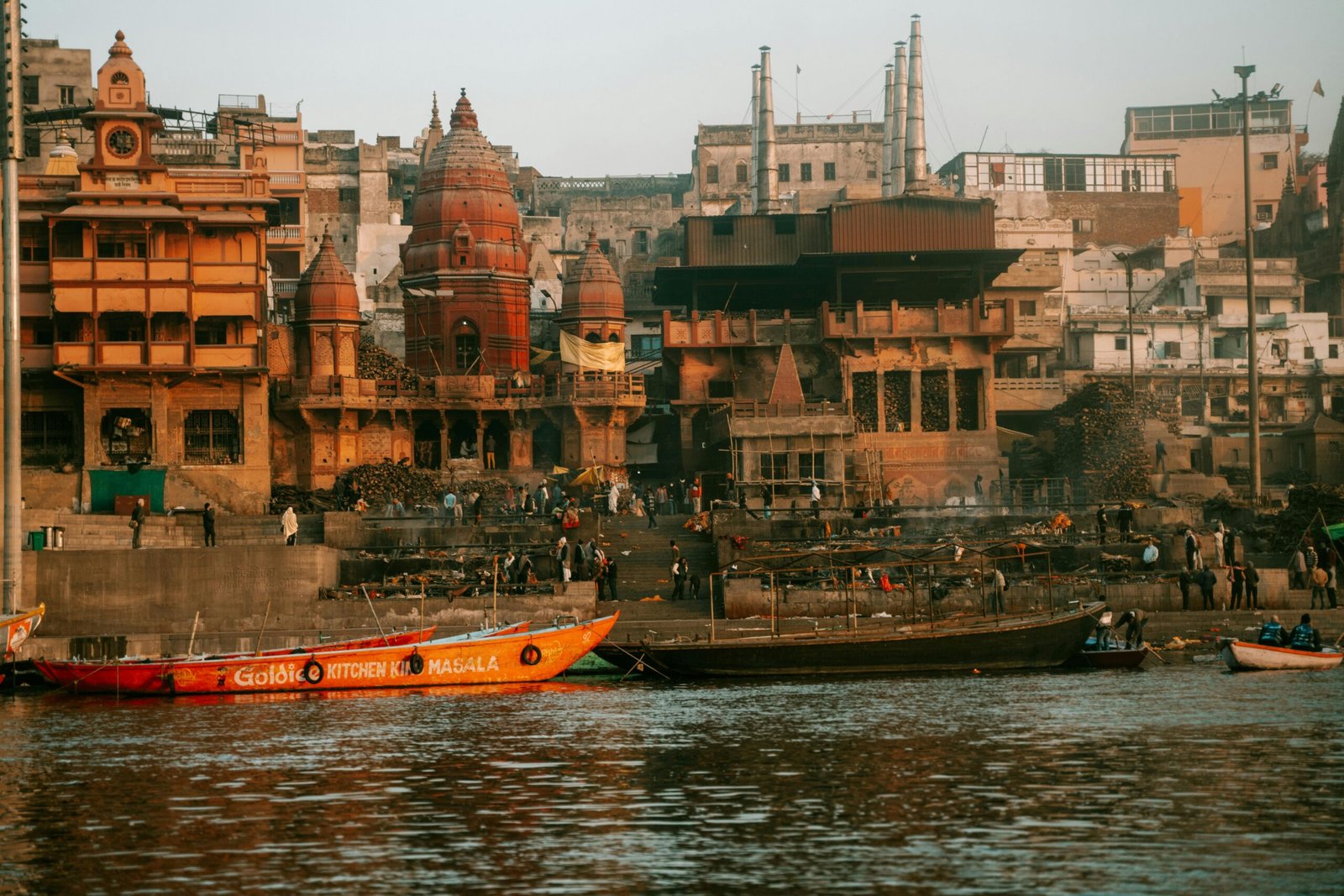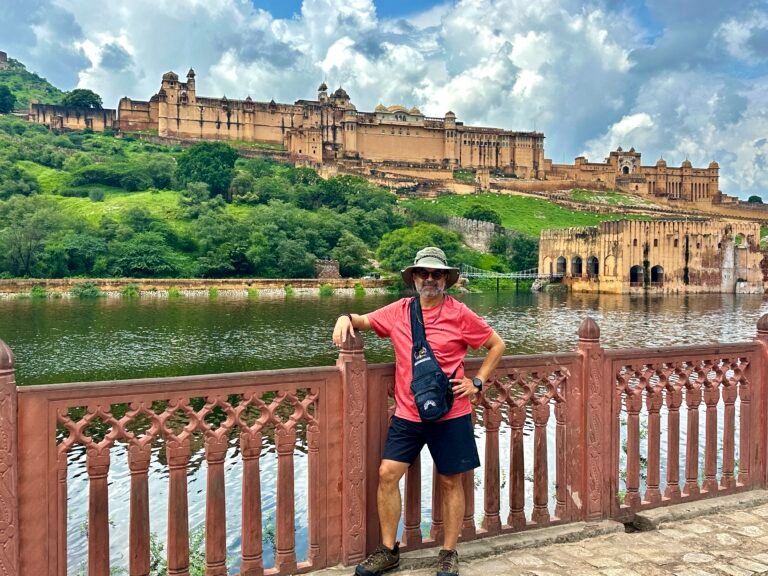Varanasi is more commonly known as Kashi or Banaras. This city is one of the oldest continuously inhabited cities in the world and a center of spirituality and culture in India. Set along the banks of the sacred river Ganga in the state of Uttar Pradesh, this city has a history going back thousands of years in which religion, mythology, and vibrant traditions are intertwined.
Varanasi’s origins go deep into Hindu mythology. The city is said to have been founded by Lord Shiva himself, and hence it is considered a sacred city for Hindus. Archaeological evidence confirms that Varanasi has existed since at least 1200 BCE. During the Vedic period, the city was established as a major center of culture and religion. It was a place of learning and philosophy, attracting scholars and sages from across the subcontinent.
The city’s importance grew during the Upanishadic period around 800 BCE when it became a cradle of intellectual thought. Varanasi is often mentioned in the ancient scriptures, such as Rigveda, Mahabharata, and Puranas, which further cement its position in India’s cultural and spiritual history.
Varanasi was an important center of trade and industry during the Maurya and Gupta periods, approximately between the 4th century BCE and the 6th century CE. It was known for its silk, perfumes, ivory works, and sculptures. Buddhism has also left a deep mark on the city during this time. Sarnath is located just a few kilometers from Varanasi, where Gautama Buddha delivered his first sermon after attaining enlightenment.
Under the rule of the Gahadavala dynasty in the 11th and 12th centuries, Varanasi regained its prominence as a religious center. Temples dedicated to Shiva, Vishnu, and other deities were constructed, and the city became a magnet for pilgrims.
On the other hand, it had invasions and destruction also in the medieval period. Mahmud of Ghazni and later Qutb-ud-din Aibak plundered the city. But Varanasi survived this ordeal and remained the home for spiritualism, even then attracting devotees and scholars.
The Mughal rule experienced challenges and rejuvenation over Varanasi. A follower of the policy of religious tolerance, Emperor Akbar was one of the strong influencers that contributed to the revival by funding the construction of the temples and ghats of this city. However, such subsequent rulers as Aurangzeb put restrictions in that many temples were brought down and replaced with mosques, such as the demolition of the most important holy Hindu shrine called the Kashi Vishwanath Temple.
The Benares State fell under the rule of the British in the 18th century, yet the city remains a great center of pilgrims in the world to this date, as its holy and cultural status was not curtailed. Varanasi took on a significant place in the Indian freedom fight as it functioned as the center of nationalist activities with Annie Besant, forming the Theosophical Society, and Pandit Madan Mohan Malaviya, founded Banaras Hindu University or BHU, associated with Varanasi.
Varanasi has remained alive and vibrant as a major spiritual and cultural center since it became independent. The very narrow lanes, ancient temples, busy ghats, and the eternal Ganga Aarti have continued to attract millions of visitors. Efforts towards restoration of heritage and making it more accessible to both the pilgrims and tourists during recent years have made all the difference.
Varanasi’s Famous Places:
Varanasi is home to numerous iconic sites that reflect its rich heritage and spiritual essences.
Kashi Vishwanath Temple
It is one of the twelve Jyotirlingas, dedicated to Lord Shiva, and a sacred representation of the spiritual status of Varanasi. The construction of the temple dates back to ancient times, although the structure was destroyed by successive invasions. Its current version was constructed in 1780 by Maharani Ahilyabai Holkar of Indore. The temple still holds high priority in the list of the greatest pilgrimage destinations for people from all parts of the world.
Dashashwamedh Ghat
This ghat is the oldest and most famous one in Varanasi. According to mythology, it is the place where Lord Brahma performed a ten-horse sacrifice, Dashashwamedha. The religious rituals and cultural events related to this ghat date back to the ancient era, like the Ganga Aarti held every evening, which is a spectacular phenomenon. This ghat remains a hub of activity for pilgrims and tourists.
Sarnath
About 10 kilometres from Varanasi is located Sarnath-the pivotal site in the annals of Buddhism. In this place, Gautama Buddha preached his first sermon after becoming enlightened in Bodh Gaya, thereby starting Dharmachakra Pravartan or turning of the wheel of law. In addition to the ancient stupa, Dhamek, built by Emperor Ashoka in the 3rd century BCE, are various ancient monasteries and other structures.
Manikarnika Ghat
This ghat is a sacred cremation ground in Hinduism. According to myth, the ghat was made by Lord Vishnu, and the ear ornament of Goddess Parvati called Manikarnika fell here. Hindus believe that being cremated at Manikarnika Ghat leads to liberation (moksha). The ghat’s timeless rituals and spiritual ambiance make it a unique and profound place.
Banaras Hindu University (BHU)
Established in 1916 by Pandit Madan Mohan Malaviya, BHU is one of the largest residential universities in Asia. The university has sprawling campuses that include the New Vishwanath Temple as its modern architectural marvel built for Lord Shiva. BHU is a cultural and intellectual landmark for Varanasi.
Ramnagar Fort
This century-old fort, built during the 18th century by Kashi Naresh Raja Balwant Singh on the east side of Ganga, is an ideal and perfect example of Mughal architecture. The complex has a museum that shows ancient artifacts, old cars, and weapons. The festival of Ramlila which has monthlong, theatre retelling of the great Ramayana, starts from this fort.
Assi Ghat
The southernmost ghat in Varanasi, Assi Ghat is also associated with the legend of Goddess Durga slaying the demon Shumbha-Nishumbha. Serenity of the ghat has made it a meditation and yoga center, besides holding sunrise rituals. It features prominently in literary works and cultural activities.
Tulsi Manas Temple
Constructed in 1964, Tulsi Manas Temple is dedicated to Lord Rama. It is a landmark marking the place where poet Tulsidas composed the Ramcharitmanas, a vernacular retelling of the Ramayana. The walls of this temple are inscribed with verses from the epic, thus it is a landmark culturally and religiously.
Bharat Mata Temple
Inaugurated by Mahatma Gandhi in 1936, the Bharat Mata Temple is unique since it is dedicated to the concept of Mother India. The temple contains a marble relief map of India, epitomizing the nation’s unity and diversity. It reflects the patriotic and spiritual ethos of the city.
Gyanvapi Mosque
Adjacent to the Kashi Vishwanath Temple, the Gyanvapi Mosque was constructed by Aurangzeb in 1669 on the site of a demolished temple. It is a poignant reminder of the city’s tumultuous history and its enduring spirit of coexistence.




